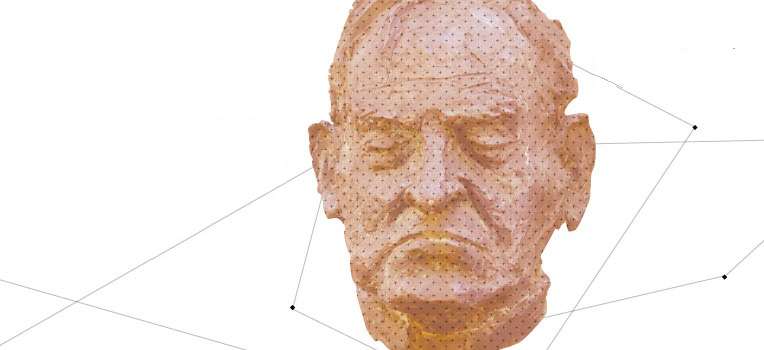GeroScope—a computer method to model cellular molecular pathways for drug development

Russian scientists from MIPT, in collaboration with Insilico Medicine Inc., were commissioned by the Center for Biogerontology and Regenerative Medicine to develop the GeroScope algorithm to identify geroprotectors—substances that extend healthy life. Hundreds of compounds were screened for geroprotective activity using computer simulations, and laboratory experiments were conducted on 10 substances that were identified using this algorithm. A research paper detailing the results of the study has been published in Aging.
Millions of dollars are spent on the process of developing new drugs. And the screening and development process of geroprotectors, interventions intended to combat aging as a complex multifactorial biological process affecting every cell in the human body, is even more tedious. Computer modeling techniques may significantly reduce the time and cost of development.
"The aging of the population is a global problem. Developing effective approaches for creating geroprotectors and validating them for use in the human body is one of the most important challenges for biomedicine. We have proposed a possible approach that brings us one step closer to solving this problem," said Alexey Moskalev, a corresponding member of the RAS and head of the Laboratory of Genetics of Aging and Longevity.
For several years, the group has studied cancer-related processes and relied on the Oncofinder, an algorithm designed to study and analyze the activation values of molecular pathways by comparing gene expression in cancerous and normal healthy cells, and also comparing tissue samples of many patients. The researchers applied a similar approach to develop GeroScope, which is able to compare changes in the cells of young and old patients and search for drugs with minimal side effects that compensate for these changes.
To do this, the scientists analyzed transcriptomic data (information which is read from DNA and transcribed into RNA) in "young" donors aged between 15 and 30 years and "old" donors over the age of 60. Samples were derived from many human tissue types. This data was used for advanced computer modeling to identify and reconstruct the molecular pathways associated with aging. Molecular pathways are a sequence of reactions that lead to changes in a cell. The most common molecular pathways are involved in metabolism and signal transduction. GeroScope modeled molecular pathways and analyzed cell reactions to various substances. Having chosen 70 compounds from the database of geroprotective drugs, the scientists used the new algorithm to identify 10 substances that could have geroprotective properties in accordance with the model.
The GeroScope model was used to analyze the tissues of young and old patients, as well as cell lines. In order to experimentally verify the algorithm, the scientists took stem cell lines of human fibroblasts (connective tissue cells). Two effects were studied: cell rejuvenation and survival.
The experiments started with the measurement of the many parameters of viable cells, inlcuding the size, shape, and complexity of the internal structure of the cells. The cells were then mixed with a test substance and a growth medium and held in this state for six, 12, and 18 days. The scientists then measured the same parameters as at the start of the experiment, as well as the level of associated β-galactosidase, which is considered one of the markers of aging.
The 10 test substances chosen by the computer model demonstrated varied results in human cell assays. For example, NDGA has no effect on rejuvenation, but it does decrease short- and long-term survival; Myricetin has a mild rejuvenating effect; and EGCG has a strong rejuvenating effect. NAC has a very mild rejuvenating effect, but dramatically increases short- and long-term survival, PD-98059 has a very strong rejuvenating effect and increases both short- and long-term survival.
The predictions made by the computer model were confirmed in cell cultures of human fibroblasts for several substances: PP-98059, NAC, Myricetin and EGCG. Some of these drugs are already commercially available as dietary supplements. Further analysis of the pathway-level effects of many of these compounds provided insights into the possible combinations providing maximal cumulative effects and minimizing the possible adverse effects.
"For computer modeling, this is a very good result. In the pharmaceutical industry, 92 percent of drugs that are tested on animals fail during clinical trials in humans. The ability to simulate biological effects with such a high level of accuracy in silico is a real breakthrough. PD-98059 and NAC proved to be the strongest geroprotectors. We hope that some of these drugs will soon be tested on people using biologically relevant biomarkers of aging," said Alex Zhavoronkov Ph.D., head of the Laboratory of Regenerative Medicine at the D. Rogachev Federal Research and Clinical Center for Pediatric Hematology, Oncology, and Immunology, an adjunct professor at MIPT, and head of Insilico Medicine Inc. (Emerging Technology Centers located at the Johns Hopkins University at Eastern Campus).
Earlier this year, Alexey Moskalev and Alex Zhavoronkov collaborated on applying the deep learning techniques to develop cost-effective biomarkers of aging on one of the most abundant data types from simple blood tests. These and other biomarkers developed using artificial intelligence will be applied to validating the effects of geroprotectors in humans.
The GeroScope algorithm developed for geroprotector screening has thus been successfully validated using series of experiments on human cells. A high correlation was demonstrated between the predictions made by the algorithm and experimental data. GeroScope will later be used to search for unknown substances with geroprotective effects as well as for compounds that may be used to treat a variety of the age-related conditions.
More information: Alexander Aliper et al, In search for geroprotectors: in silico screening and in vitro validation of signalome-level mimetics of young healthy state, Aging (2016). DOI: 10.18632/aging.101047
Deep biomarkers of human aging: Application of deep neural networks to biomarker development. DOI: 10.18632/aging.100968















